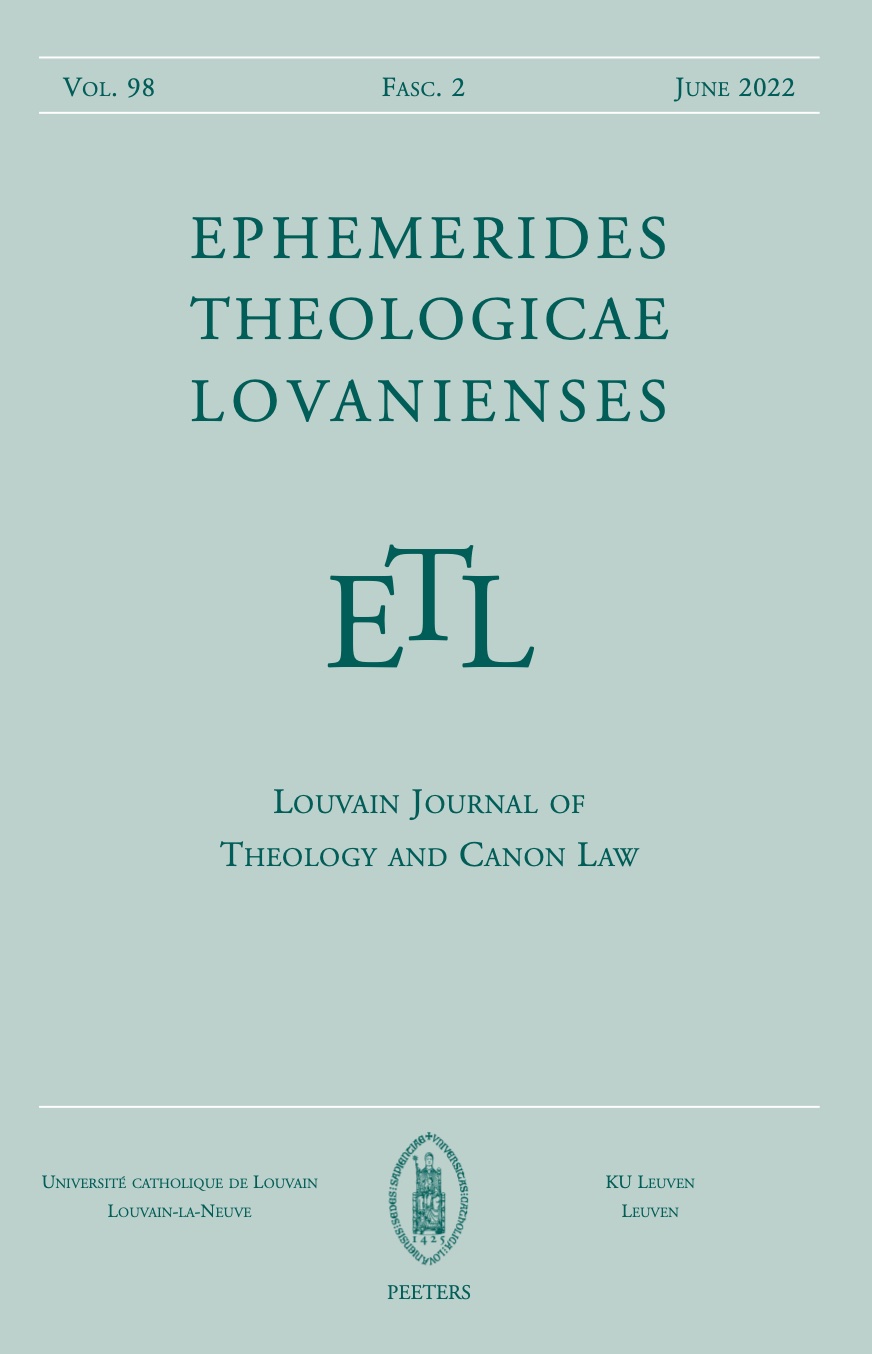 previous article in this issue previous article in this issue | next article in this issue  |

Preview first page |
Document Details : Title: Ezekiel 4 and 5 in Hebrew and in Greek Subtitle: Numbers and Ciphers Author(s): LUST, J. , HAUSPIE, K. Journal: Ephemerides Theologicae Lovanienses Volume: 77 Issue: 1 Date: April 2001 Pages: 132-152 DOI: 10.2143/ETL.77.1.564 Abstract : The symbolic actions described in chapters 4 and 5 are concerned with Jerusalem, and are to be signs for “the house of Israel” (4,3). Like other similar symbolic acts, they appear to represent as a present reality a future but impending event. Most of these acts are related to doom. In this section the main difference between LXX and MT is to be found in the use of numerals. Verses 4-9 of chapter 4 describe the number of the years of guilt of Israel and Judah. The figures given in LXX differ significantly from those in MT: the Greek mentions 150, 190, and 40 days or years, whereas the Hebrew has two figures only: 390 and 40. In chapter 5, the prophet is to weigh out his shorn hair into equal parts and to dispose of them in different ways. What happens to the hairs symbolizes the fate of the inhabitants of Jerusalem. The Greek text however distinguishes between four parts, where MT has only three. These observations invite us to have a closer look at the use of numerals in Ezekiel, in LXX and in MT respectively. We will proceed as follows: first we will pay special attention to the figures in 4,4-9 and briefly propose a suggestion on the numbers in 5,2.12. Then a quick survey will be given of the Greek equivalents of all the cardinal and ordinal numerals in the Hebrew text, in ascending order. In a third step we will focus on the numerous dates in the book, to the detailed measurements in the final vision, and to the alphabetic numerals in p967. After these introductory investigations we will turn to a closer reading of the Septuagint in chapters four and five. |
|


